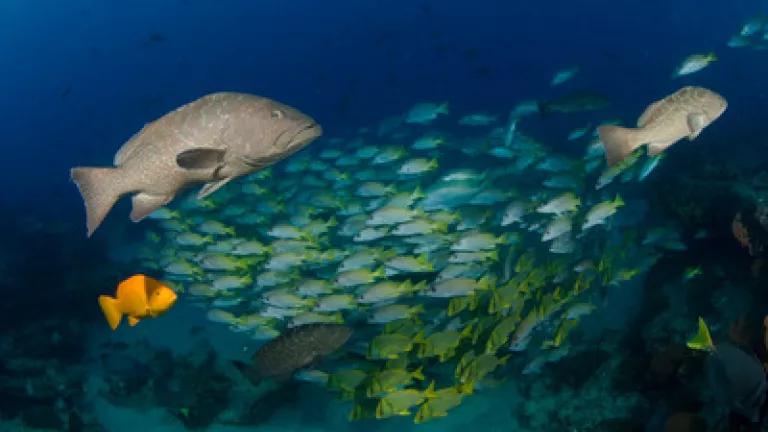
For the third time, the threat of massive coastal tourism and real-estate development has returned to Cabo Pulmo National Park, one of the world’s most robust marine reserves and home to a critically important coral reef system. The new mega-resort project, now called “Cabo Dorado”, is proposed for the exact same spot where the Cabo Cortés development was planned. From the looks of it, the project is not much different from prior versions, raising the specter that Cabo Pulmo’s fragile coral reef and the local community’s fresh water supply could once more be at risk.
The local group the Mexican Center for Environmental Law (CEMDA) will be formally calling for a public meeting and consultation to ensure people are adequately informed about the project plans and the potential social and environmental impacts, but here’s what we know so far about Cabo Dorado:
- The 3,770 hectare project is proposed on the same lands - just north of and adjacent to the Cabo Pulmo reserve - where first Cabo Cabo Cortés and later Los Pericúes were proposed.
- This new iteration of the mega-resort would be built in five phases at a cost of at least 3.6 billion dollars.
- The project would include the equivalent of 22,500 rooms distributed over 9 hotels and more than 6,000 residences.
- There would be two golf courses, sports facilities, beach clubs, a 14 kilometer aqueduct and other facilities and infrastructure. The project plan also proposes to construct a new airstrip on the site.
- A project of this scale and scope would generate 711,900 kilograms of waste per day and could extract up to 4.8 million cubic meters of water from the local aquifer of this arid, desert region.
- Apart from the proximity to the fragile Cabo Pulmo coral reef and the marine life it supports, the proposed project site is home to 26 species considered at risk under Mexican law, including endemic plant species and endangered sea turtles.
Unlike its predecessors, this iteration of the project does not include a marina or water desalination plant. However, the sheer scale of the proposal is concerning given how close it is to the Cabo Pulmo reserve, recognized as both a UNESCO World Heritage Site and Ramsar Wetland of International Importance. In fact, back in November 2011 representatives from both of these international organizations visited the site to assess the potential impact from Cabo Cortés, the original project. The joint report issued after the visit recommended that Mexico consider restricting future large-scale development in the vicinity of the park to avoid the risk of cumulative impacts.
UNESCO and Ramsar are not the only ones to have weighed in about the risk of large-scale development in the region. Even after the authorization for Cabo Cortés was cancelled, the IUCN’s World Conservation Congress in September 2012 issued a resolution urging Mexico to guarantee the protection of Cabo Pulmo, including from risky large-scale tourism and real-estate developments.
And last year, the North American Commission on Environmental Cooperation (CEC) agreed to consider a citizen petition filed by eleven groups from Mexico and the United States, including NRDC, that highlighted four instances where large-scale resorts along the Gulf of California – including Cabo Cortés– received key permits despite grievously weak environmental impact statements that failed to meet the standard of the law by not considering the best available technical and scientific information. Earlier this year 27 leading international scientists urged the CEC to investigate the matter further in order to help strengthen the impact review process in Mexico and help avoid similar situations.
Fortunately Cabo Cortés was eventually halted by former President Calderón in June 2012, but the fact is it should never have progressed as far as it did. Now, with a new project proposed near Cabo Pulmo National Park it is absolutely critical for Mexican authorities to ensure that history does not repeat itself. A project that would endanger the fragile marine and terrestrial ecosystems near Cabo Pulmo and the neighboring communities must not be allowed to move forward as Cabo Cortés did.
This time around, with Cabo Dorado, Mexico’s authorities can get it right from the start by listening to some of the people who know the region and its natural resources best: the communities that depend on them and the scientific experts that have dedicated years to their study. A bad project that threatens one of the country’s and the world’s crown jewels must simply not get the green light – no matter how many times or who proposes it.
Photo credit: Octavio Aburto

